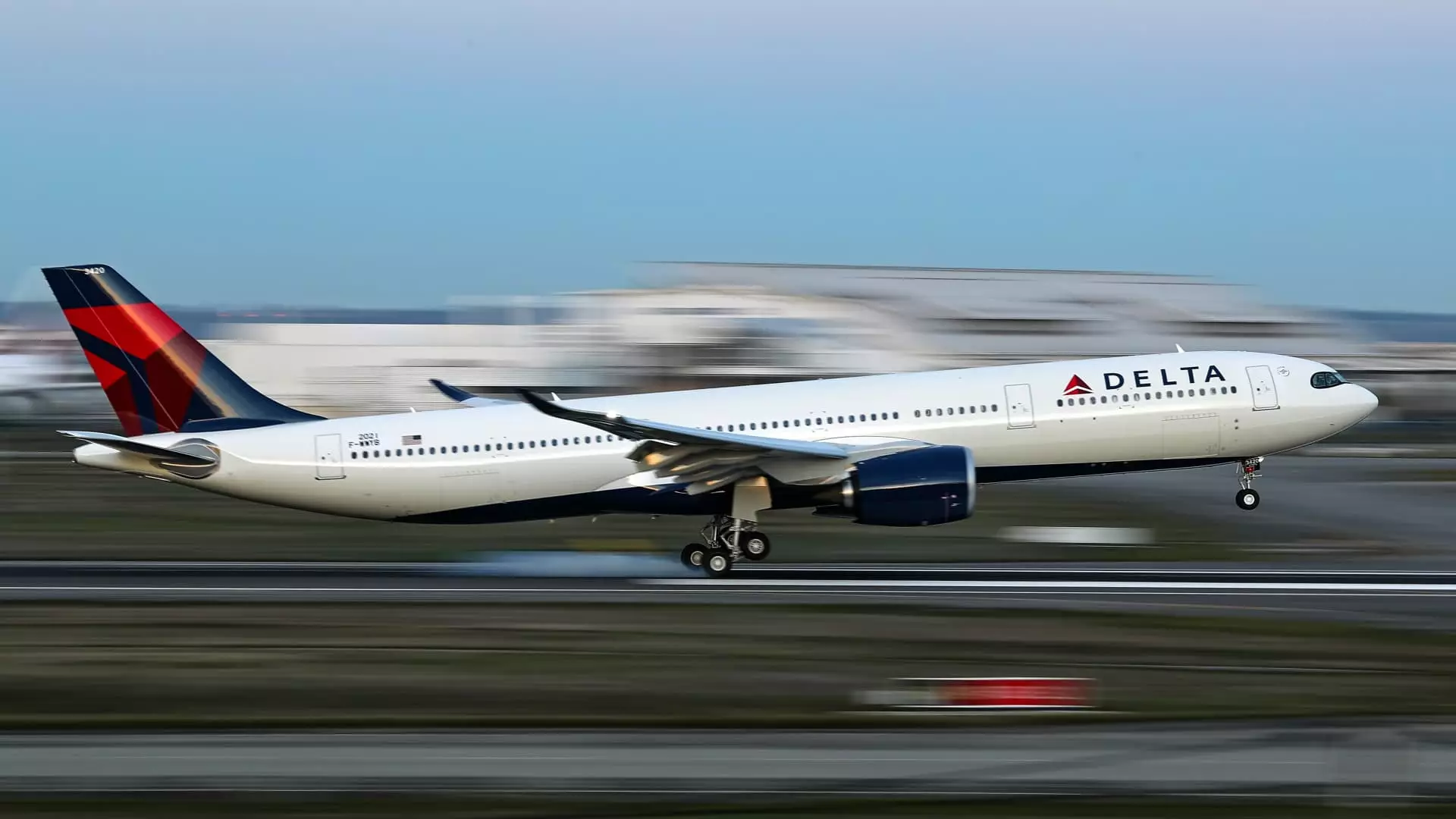Delta Air Lines recently announced its forecast for record revenue in the third quarter, highlighting the strong summer travel demand. However, this projection fell below analysts’ estimates due to various factors. The carrier expects a sales increase of no more than 4%, which is lower than the 5.8% growth estimated by analysts. It also forecasted adjusted earnings per share to be between $1.70 to $2, falling short of the $2.05 per share estimated by analysts. As a result, shares of Delta fell about 9% in premarket trading, impacting other U.S. airlines as well. These challenges signify a tough period for Delta and the aviation industry at large.
The airline industry is currently experiencing packed planes, indicating a high demand for travel. However, profits are under pressure due to rising costs and increased capacity affecting airfares. Airlines have been expanding their flight schedules, resulting in discounted fares to attract customers. With the growth in passengers, costs have also seen a surge, impacting profit margins for carriers like Delta. The competition in the oversupplied U.S. air travel market is intense, leading to challenges for airlines in maintaining profitability. Delta’s focus on premium seats has been a strategic move to increase revenue, especially in the face of declining average fares.
Analyst Ratings and Performance in the Second Quarter
Delta remains a standout in the U.S. airline industry, with high profitability compared to its competitors. Analysts have provided favorable buy ratings for both Delta and United Airlines, recognizing their potential in the market. In the second quarter, Delta reported adjusted earnings per share of $2.36, which was in line with analysts’ expectations. However, adjusted revenue slightly missed Wall Street estimates, indicating a mixed performance. The net income for Delta dropped almost 30% from the previous year, reflecting the cost pressures faced by the airline. Despite these challenges, CEO Ed Bastian highlighted the strong performance in the second quarter, attributing it to lower fare discounting in the domestic market.
Delta is focused on strategies to manage costs, improve profitability, and ensure sustainable growth in the future. The airline expects to see positive unit revenues in September, which is a promising sign for the upcoming months. By reducing industry capacity in the U.S., Delta aims to align supply with demand, thus optimizing its operations. The growth in corporate travel is another area of opportunity for Delta, with expectations of increased spending from customers. The airline plans to expand its flying capacity by 5% to 6% in the third quarter, emphasizing a cautious approach to growth compared to the second quarter.
International travel has been a significant revenue driver for Delta, especially as demand increased post-pandemic. However, the expansion of flight schedules has led to more competition for customers, affecting unit revenues. The airline noted a slight impact on unit revenue from trans-Atlantic flights due to the Summer Olympics in Paris, demonstrating the external factors influencing its financial performance. Delta’s focus on premium tickets and other revenue sources, such as the American Express credit card deal, has helped diversify its income streams. By relying less on standard coach tickets, Delta aims to mitigate the impacts of industry overcapacity on its financial health.
Delta Air Lines faces various challenges in meeting revenue expectations for the third quarter. Despite recording strong performance in the second quarter, the airline must navigate rising costs, competitive pressures, and external factors affecting its profitability. By implementing strategic initiatives to optimize operations, manage capacity, and diversify revenue streams, Delta aims to overcome these challenges and sustain its growth trajectory in the future.

